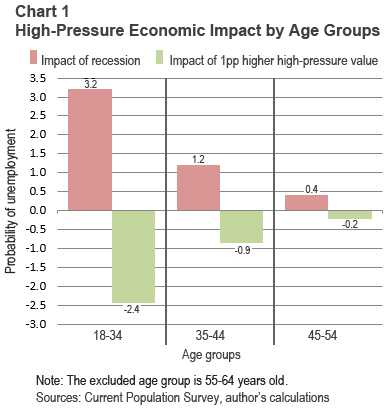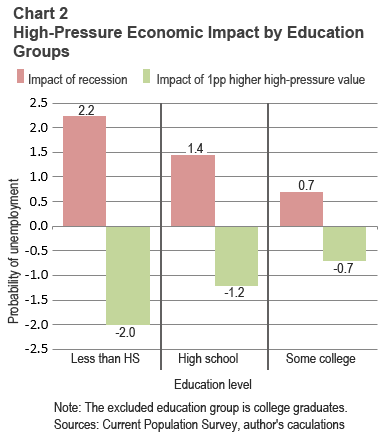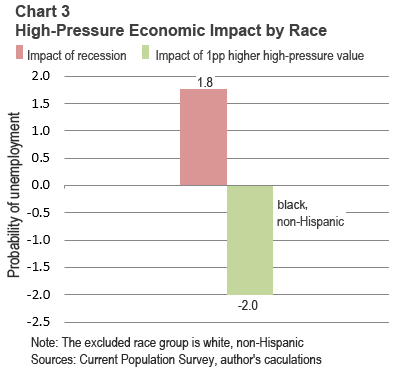Does a High-Pressure Labor Market Bring Long-Term Benefits?
Julie L. Hotchkiss
Atlanta Fed Macroblog, February 13, 2017
Though it ticked up slightly in January , the U.S. unemployment rate is arguably at, or near, its long-run sustainable level. At least that is the apparent judgment of Federal Open Market Committee participants, the Congressional Budget Office (CBO), and others, Not surprisingly, this consensus is leading to some speculation that a combination of policy and the economy’s natural momentum may result in unemployment rates moving well below sustainable levels—a circumstance some have referred to as a “high-pressure” economy.
Though lower-than-normal unemployment rates may have benefits, at least in the short-term, it is generally recognized that these circumstances also carry risks. Specifically, if the demand for resources (including labor) expands beyond the economy’s capacity to supply them, the risk of undesirable inflation, financial imbalances, and other negative developments may grow—a point that Boston Fed President Eric Rosengren emphasized late last year. In recent history, high-pressure episodes have generally ended with the economy entering a recession; soft landings appear to be elusive.
That said, some have outlined potential labor market benefits to individual workers during high-pressure episodes—including higher labor force attachment, higher wages, and better job matches (see for example, here, here and here). But could these types of labor market benefits persist and actually improve a worker’s ability to also withstand an economic downturn?
To investigate this possibility, I ask the following question: Do high-pressure economies at the state level reduce the probability that a worker enters into unemployment during a subsequent downturn?
The details of my approach, using cross-sectional data from the monthly Current Population Survey, can be found in this appendix .
The following three charts illustrate the moderating impact a high-pressure economy can have on the probability of unemployment during a recession for various demographic groups. Chart 1 shows the impact on different age groups. The data tell us that the probability of unemployment for 18- to 34-year olds is 3.2 percentage points higher during recessions than during expansions, relative to how much higher the probability of unemployment is during recessions for 55- to 64-year olds (the excluded age group). This estimate is an average across all recessions between 1980 and 2015. Those who are 45- to 54-years old have only a modestly higher probability of unemployment (0.4 of a percentage point) during recessions than 55- to 64-year olds.
However, we also see from chart 1 that the effect of the recession on each age group is moderated by the state’s high-pressure economy. Specifically, for each average percentage point by which the state’s unemployment rate fell below the state’s natural rate of unemployment prior to the recession, the probability of unemployment facing 18- to 34-year olds falls by 2.4 percentage points. Simply put, the hotter the state’s prerecession economy, the lower the impact of the recession on workers’ probability of unemployment.

We see the same impact across education groups in chart 2. Whereas those with some college face a probability of unemployment during a recession that is 0.7 percentage points higher than that of a college graduate, a prerecessionary high-pressure episode just 1 percentage point higher will wipe out the disadvantage that those with some college face during a recession relative to those with a college degree.

Chart 3 shows that black non-Hispanics experience even greater benefits from a high-pressure economy. A high-pressure period just 1 percentage point greater prior to a recession more than erases the average impact of the recession, relative to white non-Hispanics. (Note that these results are averaged across all recessions since 1980 and hence don’t say anything about the labor market outcomes during any particular recession.)

The evidence I provide here suggests that a high-pressure economy may have some longer-term benefits in terms of improving labor market outcomes during economic downturns. If this is indeed the case, understanding how and why will be an important step in assessing the risk/reward calculus of high-pressure periods.
~~~

